
The Good & The Beautiful language arts curriculum was created by a homeschool mom with the goals of making an easy, beautiful, affordable, academically solid, joyful, and character building curriculum. We have used it and have used other language arts curriculum as well. This is my honest review and answers to FAQ.
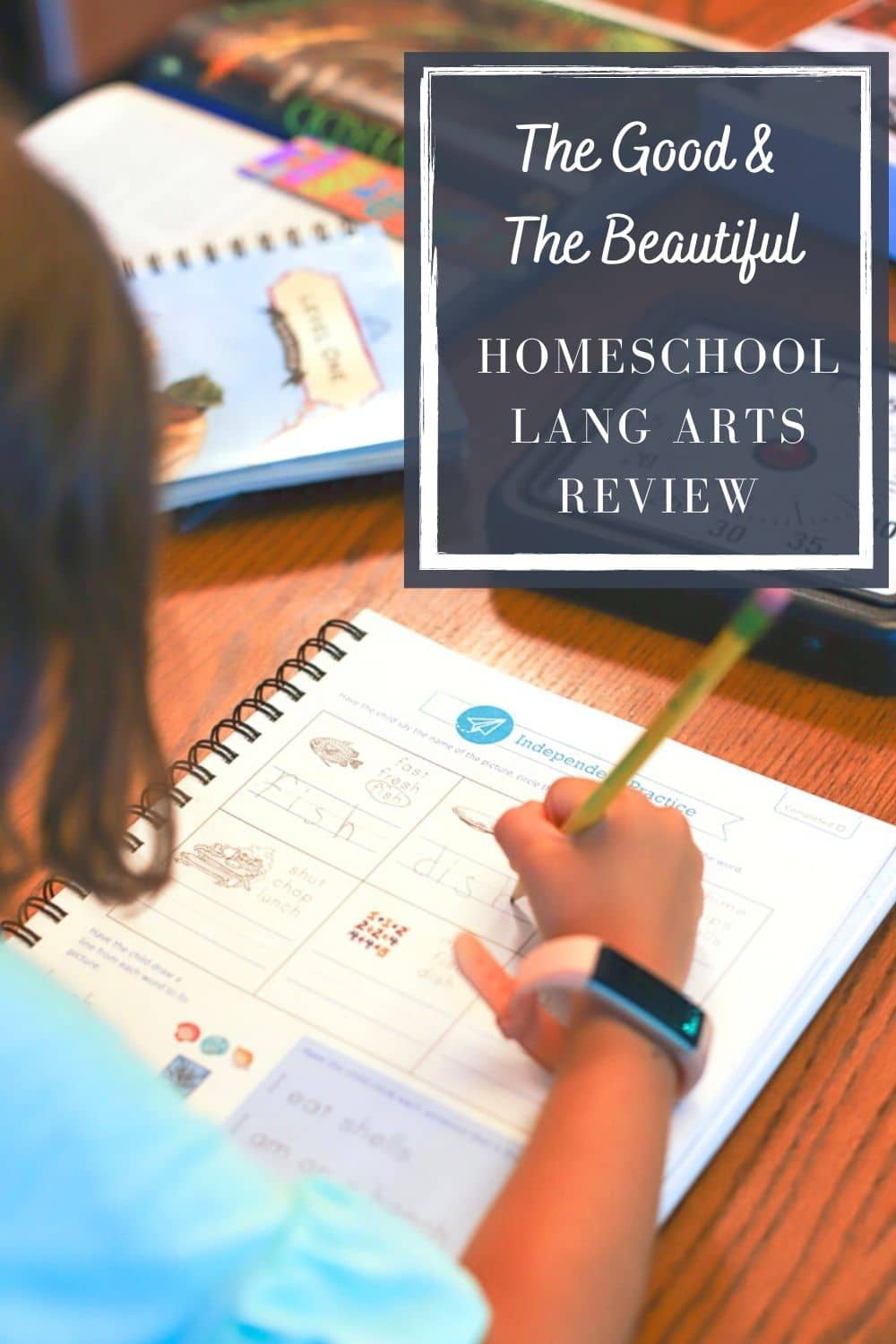
We homeschool year round. We haven’t always done this, but after some trial and error (which is all homeschool and parenting anyway, right?), we found that year round works best for us. However, how we do school during different parts of the year looks very different. I wrote more about it in this post: Homeschooling in Rhythm of the Seasons.
When I knew we would begin this new school year (3rd and 1st grade) in late June/early July I knew two things. First, that it would be summer and we’d want something that was grab and go without a lot of prep work that we could fit into our days between swimming and splashing. Furthermore, I knew we’d be trying to pack up the house and move, which is another reason a grab and go curriculum was a high priority for me to start the year with.
In summer, we do two subjects- language arts and math. While we talk about matters related to other subjects, we stick to these two core subjects and wait until fall to add in science and history in a more concrete manner.
For language arts, I have experience using several different materials: Brave Writer, First Language Lessons, All About Reading, All About Spelling, Handwriting Without Tears, and The Good and The Beautiful. They all good materials and I’m using Brave Writer this year in conjunction with The Good and the Beautiful for some extra writing focus.
Language arts is a tricky subject because it encompasses so many micro subjects like phonics, spelling, reading, writing, grammar, etc. I knew I wanted a curriculum that would encompass all of those things, then I could supplement in the areas I wanted to add a little more focus to. For these goals, The Good and the Beautiful seemed like the perfect natural fit.
There was only one problem- we had done it before and found it to be quite dry. I was deterred slightly by that, but my need for all encompassing and open and go won out. When it arrived, I was pleasantly surprised to see that the upgrades and tweaks they had done to the curriculum to make it more engaging and equal out the length of the lessons had proven to be successful. We are now about 13 lessons into it and I can say it’s working really well for us!
It’s all the language arts we are doing right now, but when we get in full on back to school mode in fall, I will add in some additional writing through the Brave Writer program and more reading as well. To make this a more rounded out review, I asked my Instagram friends for any questions on the topic, and figured a FAQ would be a great way to address the questions and concerns I received.
As a disclaimer, all the answers below and nothing more than my personal opinion, having used the curriculum two years ago and currently using it now.
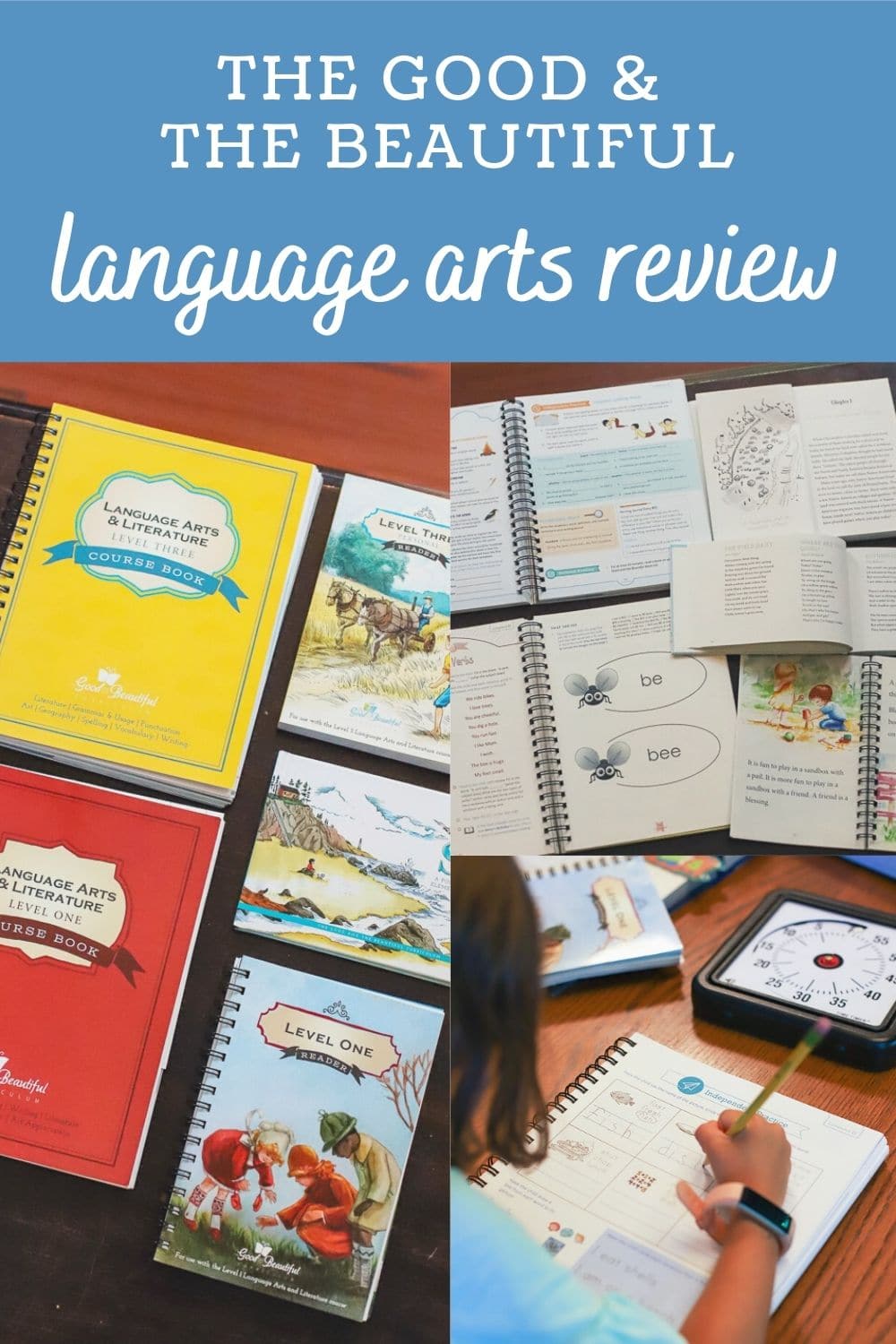
The Good and the Beautiful Frequently Asked Questions
Is it best used as a stand alone or supplemental?
I believe it’s a great all encompassing stand alone curriculum, so I’d recommend using it as your core, then supplementing as needed with additional writing and reading.
Does the curriculum talk a lot about religious topics? I know it’s a Christian-based program.
It depends on your definition of a lot. I appreciate the values and morals reflected in the curriculum and accompanied reading. While it is faith-based and includes references to the bible and God, I feel it’s more of a sprinkling throughout, than a strong presence. However, if you run a strongly secular household, than I would advise against this curriculum.
Do you know if it covers Canadian standards?
I don’t know about this, I’m sorry. I tried a quick google search and didn’t find anything.
Can it be used successfully in a secular home?
It truly depends on your personal level of comfort with having references to the bible and to God. It says things like “God tells us that ____” or “In the verse Isaiah ____.” However it is not the main focus of the curriculum. They have sample pages on their site you can check out to see if it might work for your family or not.
Do you aim to complete one full lesson each day? How long does it take?
Yes, we do one full lesson in a sitting. For Hailey (8 years old, third grade, level 3) it takes about 45 minutes. Independent reading is an additional 20 minutes. For Kaitlyn (6 years old, first grade, level 1) it takes a little less, maybe 30 minutes with additional independent reading being 15-20 minutes.
Is this enough writing or do you use a separate curriculum for that?
While it does offer some writing opportunities (Hailey in level three even has a writing journal and will have prompts every so often to complete), I supplement with additional writing from the Brave Writer program.
Can you teach a child to read using only TGATB?
The Pre-K and K levels include phonics and fun games to play surrounding reading, however, and I think you could, however, I would personally supplement with a reading-specific guide like An Ordinary Parent’s Guide to Teaching Reading or Teach Your Child to Read in 100 Easy Lessons.
What age is appropriate to start this?
It begins with a Pre-K level and we used it in a relaxed form for Kaitlyn at age 4. She loved it.
Do you consider it a challenging curriculum?
I have found it to be on par with grade standards. So neither easy, nor challenging, but a solid choice to ensure we cover what we need to for each grade. Since it is all encompassing, I find the girls fly through some concepts, but need additional explanation or help on others.
How would you rate it for a busy, stir-crazy K/1 boy?
Hm… I don’t have personal experience with a stir-crazy boy. My two cents is that it isn’t a curriculum designed with the highly energetic student in mind. However, I think you could adjust as needed to make it fit. For example, instead of just reading the sight word mountains, you could have him read one of the words and do a “mountain climber” exercise before reading the next one. You might have to get a little creative, but I think it could work.
I remember Hailey not loving it in Kindergarten. Can you explain?
Yes, we loved the concept but found it fairly dry. Since then (3 years ago) they made alterations to the program to include more activities and games in the lower levels (they might have done other changes too) and so far we’ve found it to be more engaging. It now switches concepts you’re working on up enough during each lessons to keep us interested.
Would it be a good supplemental learning tool to virtual learning?
It’s such an all encompassing curriculum that you could do it, but I would probably pick the areas you want to focus on with your child and find specific materials for those areas instead. For example, doing just a spelling curriculum or writing curriculum to enhance virtual learning rather than run a full secondary curriculum.
I also wanted to give you a peek inside, so here is a look at the Level 1 and Level 3 materials from The Good and The Beautiful:
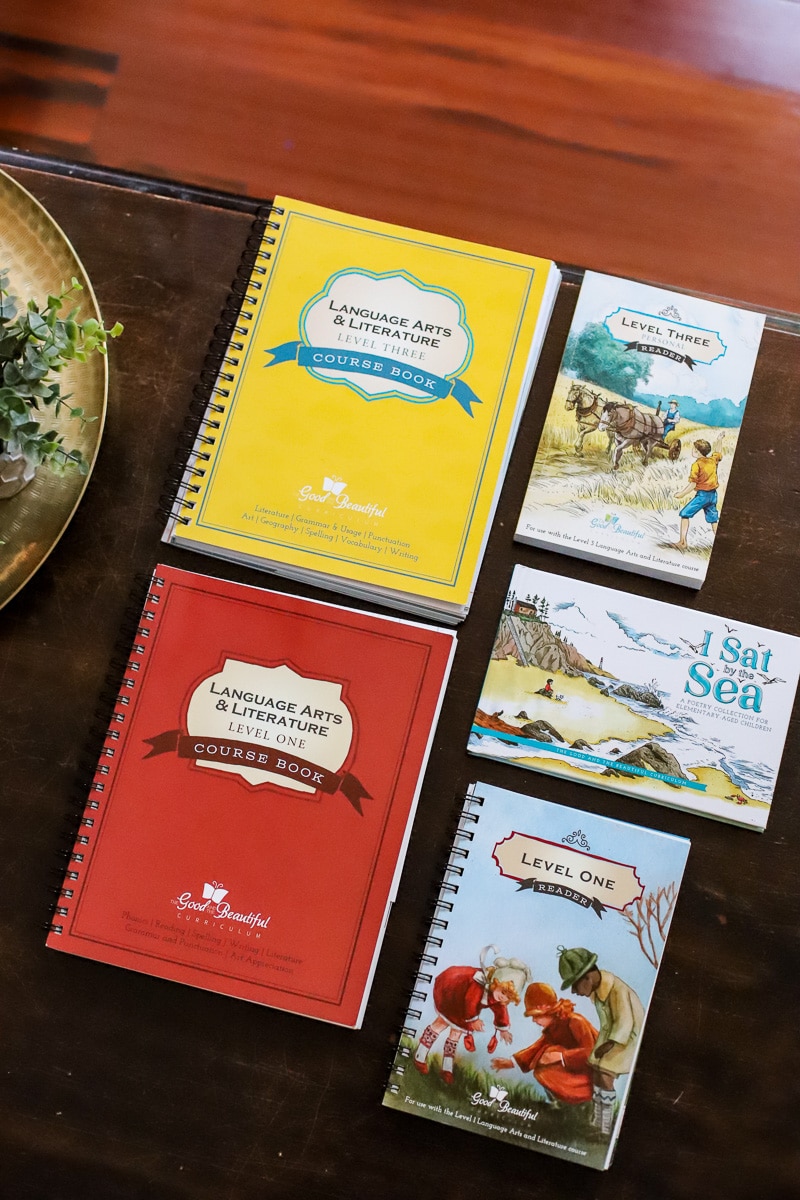
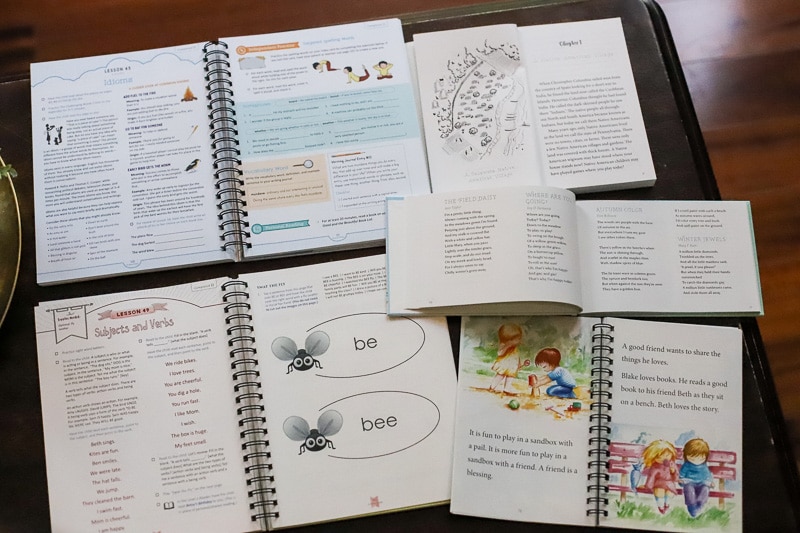
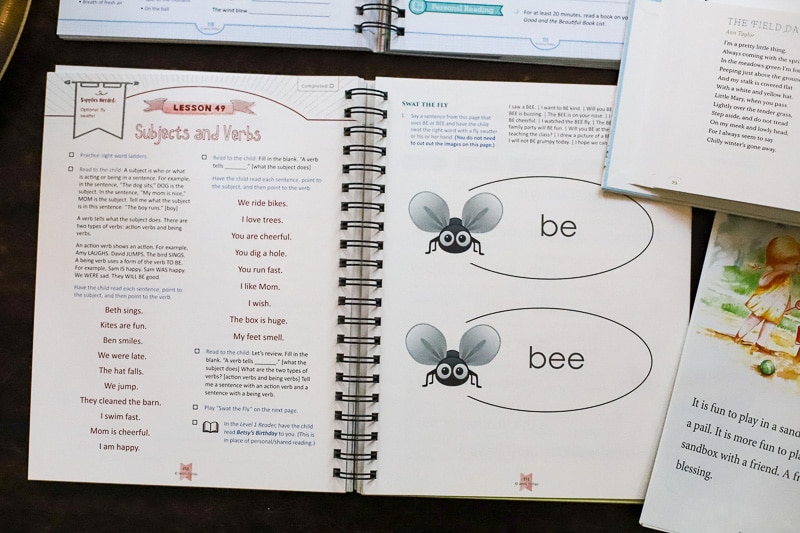
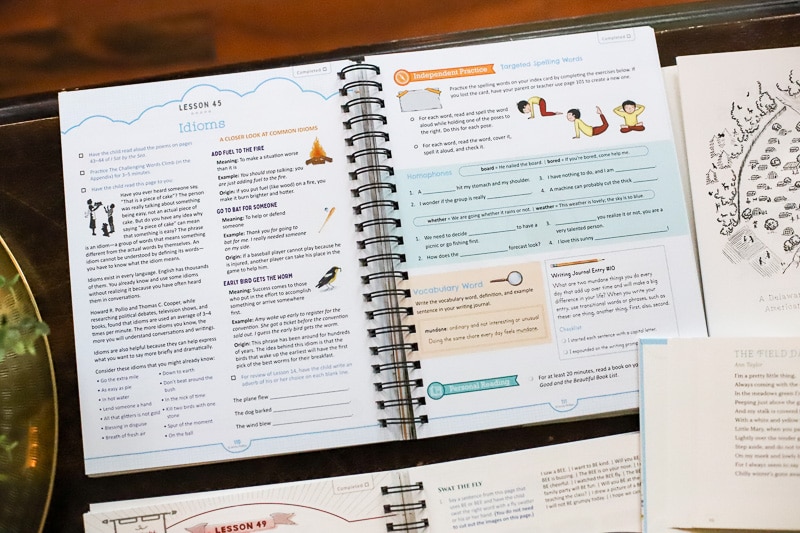
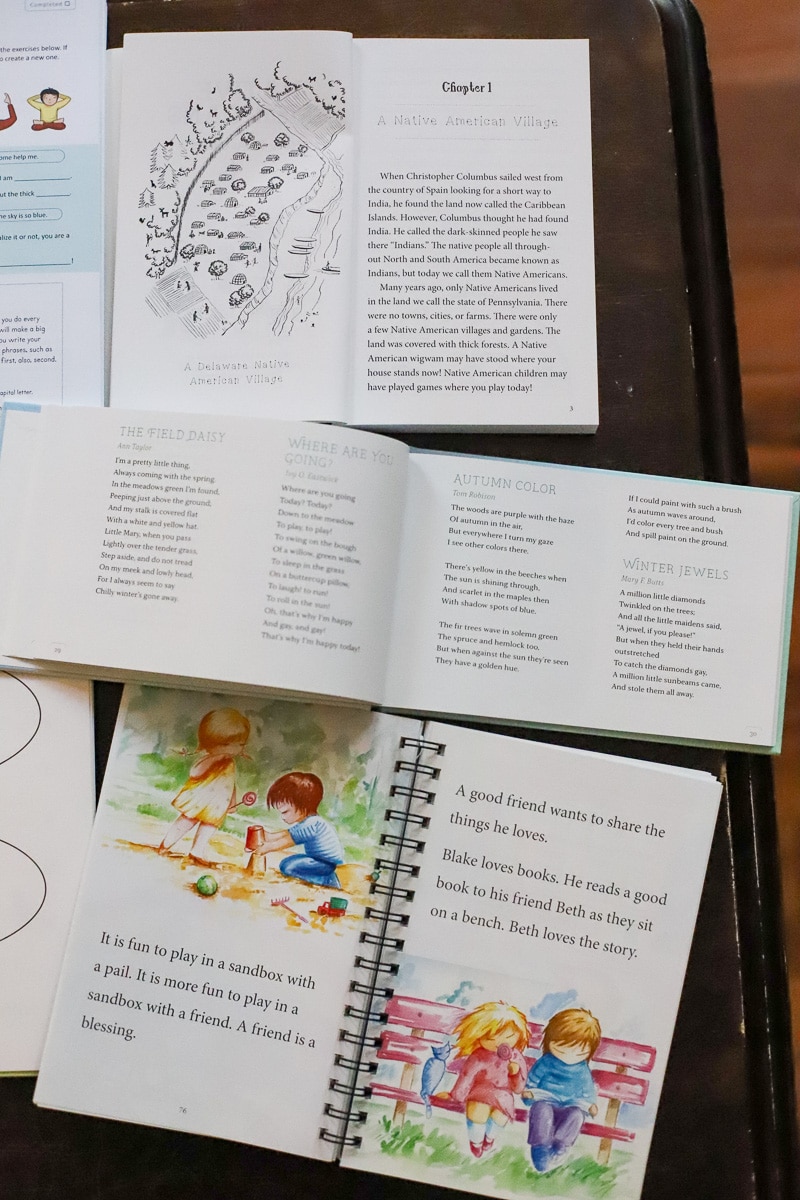





No comments:
Post a Comment